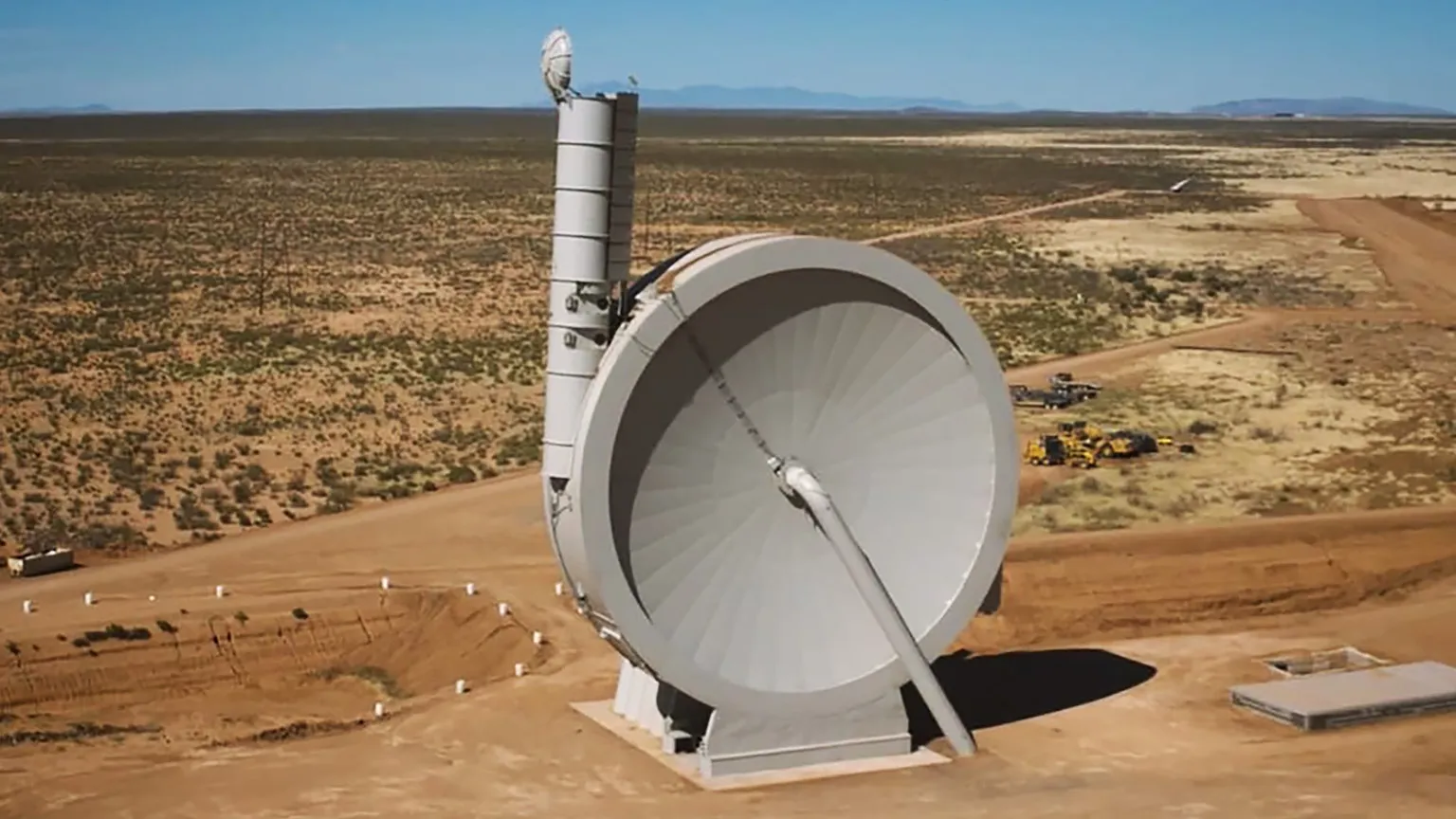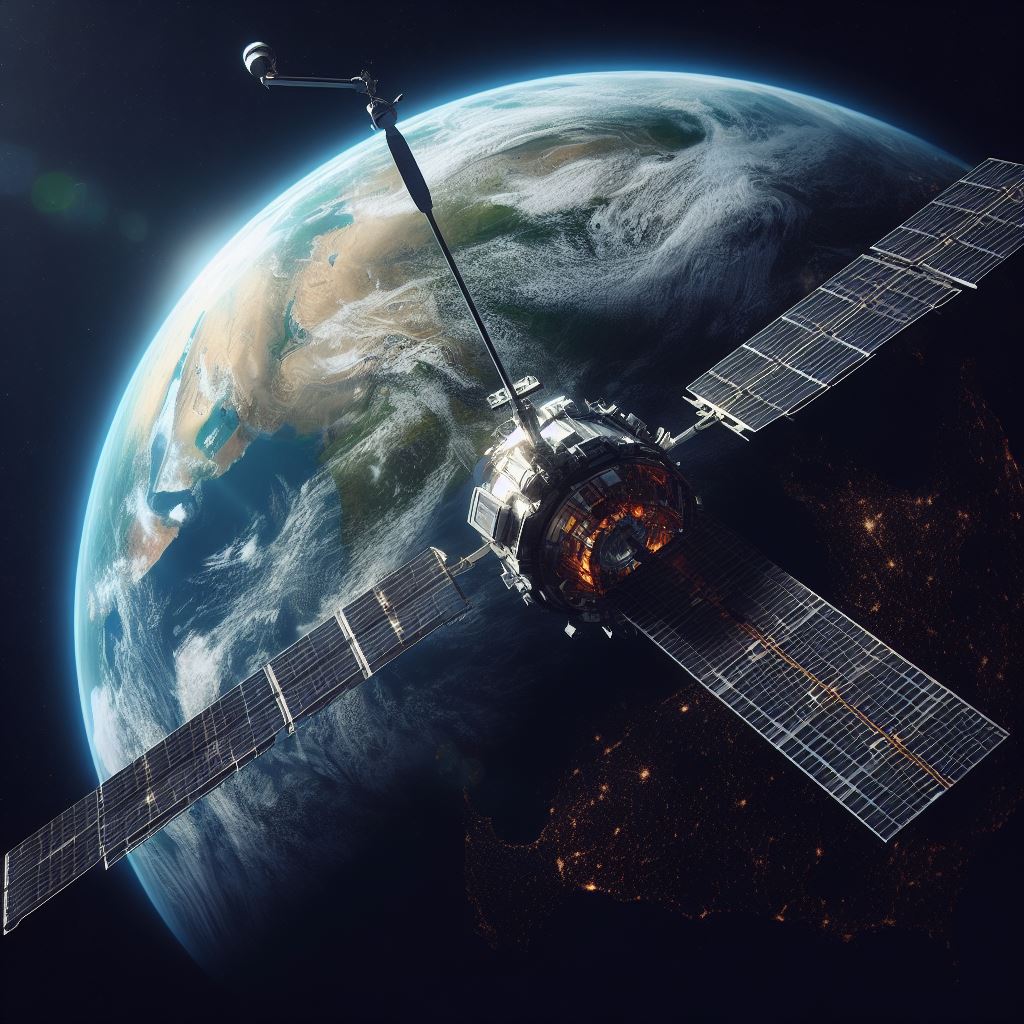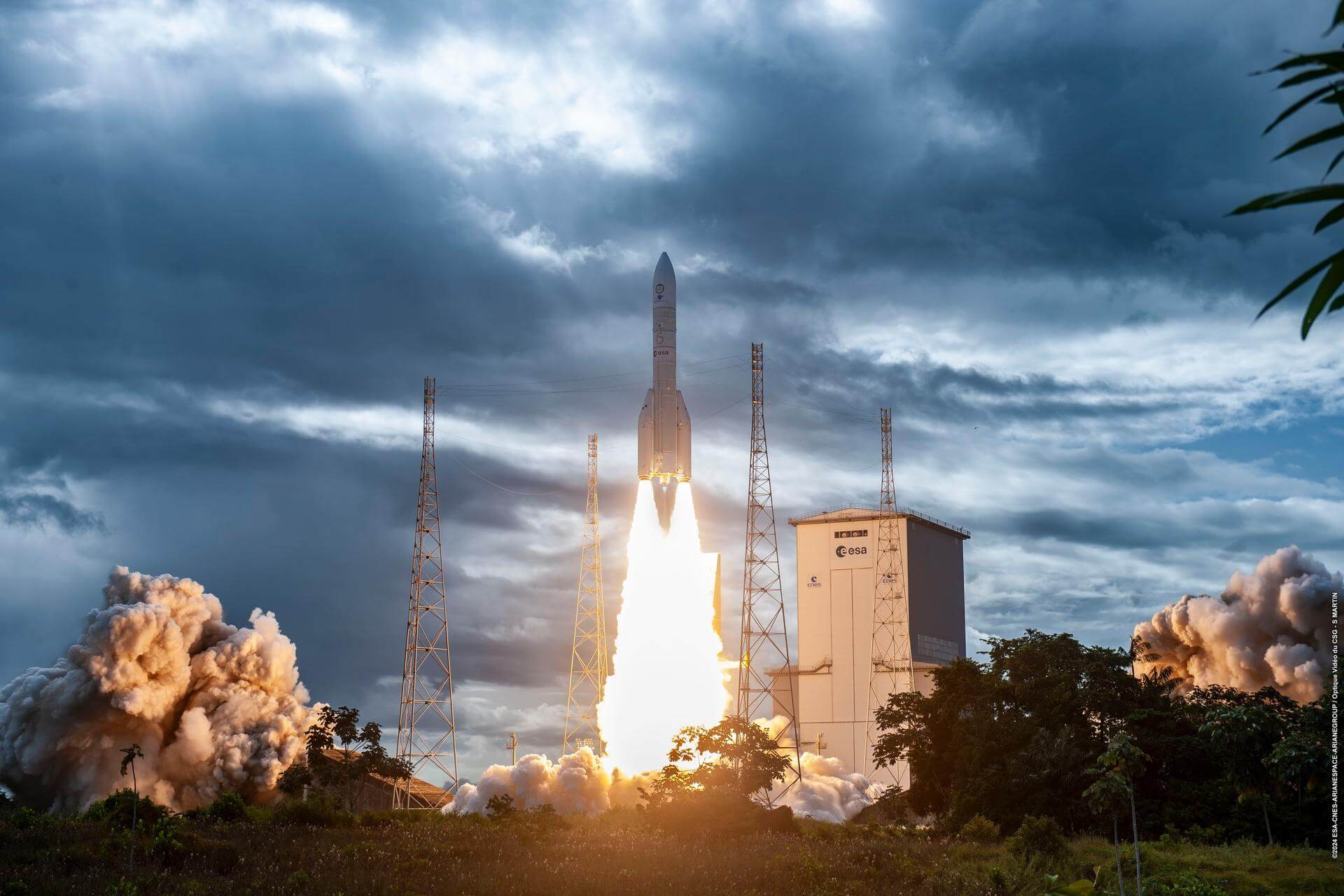· deep dive · 11 min read
SpinLaunch's Kinetic Launch System
How a California startup's massive centrifuge could transform space access by eliminating rocket fuel, reducing costs by 70%, and enabling daily satellite launches - if it can overcome the physics of scaling from suborbital tests to orbital reality

Picture this: instead of strapping your satellite to thousands of gallons of explosive rocket fuel and lighting the fuse, what if you could just… fling it into space? That’s exactly what SpinLaunch is doing in the high desert of New Mexico, where they’ve built what’s essentially the world’s largest centrifuge to literally spin satellites up to 5,000 mph before hurling them skyward.
It sounds like something straight out of a cartoon, but after 10 successful suborbital tests and over $150 million in strategic partnerships, SpinLaunch is dead serious about revolutionizing space access. They’re promising to slash launch costs from $6,000 per kilogram down to under $2,500 – a reduction that could completely reshape the satellite industry.
But here’s the catch: proving their concept works with a one-third scale model is one thing. Scaling it up to actually reach orbit? That’s where things get really interesting – and really challenging.
The Wild Physics of Flinging Satellites
Let’s be honest – when you first hear about SpinLaunch’s approach, it sounds absolutely bonkers. But the physics actually make sense, even if the engineering is mind-boggling.
Think of it like an enormous slingshot, except instead of a simple elastic band, they’re using a massive vacuum-sealed centrifuge. The system spins payloads up to incredible speeds – we’re talking about forces that would turn a human into jelly – before releasing them on a precise trajectory toward space.
To put the G-forces in perspective, here’s what different things experience:
- Your car during normal driving: 1 G
- A fighter pilot pulling hard maneuvers: 9 G
- A severe car crash: 50-100 G
- SpinLaunch satellites: 10,000-20,000 G
Yeah, you read that right. SpinLaunch satellites need to survive forces that are 100-400 times stronger than a car crash, and they need to do it for 30 minutes straight while spinning around like they’re on the world’s most extreme carnival ride.
Current System vs. The Big Kahuna
What they’ve got running at Spaceport America right now is impressive enough – a 33-meter diameter steel dome that’s the largest vacuum chamber ever built. But it’s just the warmup act. The real showstopper they’re planning for Alaska will be a 100-meter monster, three times larger and designed to fling satellites at the 17,000+ mph needed to actually reach orbit.
The suborbital system they’re testing has already hit 1,620 km/h at just 20% power. When they crank up the full-scale version, they’re aiming for 8,000 kph exit velocity – fast enough that a small rocket motor can finish the job and push the satellite into a stable orbit.
Engineering Magic (Or Madness?)
The engineering challenges here are unlike anything we’ve seen before. Every single component – from GPS units to solar panels to the tiniest circuit board – has to survive those crushing G-forces. It’s not just about making things stronger; it’s about completely rethinking how satellites are built.
SpinLaunch has had to develop specialized potting compounds, reinforced aluminum structures, and enhanced vibration isolation systems. They’ve even tested consumer electronics like iPhones and found they survive surprisingly well. Still, most satellites will need custom designs specifically for kinetic launch.
Testing in the Desert (And Then… Silence?)
SpinLaunch’s facility at Spaceport America is a sight to behold – a 50-meter tower rising from the New Mexico desert, housing what looks like something between a particle accelerator and a giant washing machine. Between October 2021 and September 2022, they pulled off 10 successful suborbital flights, reaching altitudes up to 30,000 feet with a perfect recovery rate.
Their tenth test flight was particularly noteworthy, carrying payloads from NASA, Airbus, Cornell University, and Outpost Space. Everyone got their hardware back in working condition, which was a huge vote of confidence in the technology.
But here’s where things get a bit concerning: they haven’t conducted a single test since September 2022. That’s over two years of radio silence on the testing front, which coincides with some significant behind-the-scenes changes.
Leadership Shakeup and Funding Woes
In May 2024, founder Jonathan Yaney stepped down, replaced by former COO David Wrenn as CEO. Around the same time, they managed to raise only $11.5 million of a planned $25 million funding round. For a company that’s raised nearly $173 million total, that’s not exactly a ringing endorsement from investors.
Despite these challenges, they’ve made some strategic moves that suggest they’re still moving forward. In October 2024, they locked down a 100-year land lease on Adak Island, Alaska – a former Naval Air Facility that offers Pacific Ocean launch trajectories and existing infrastructure.
Chasing the Small Satellite Gold Rush
SpinLaunch isn’t just building a cool piece of technology; they’re betting big on the booming small satellite market. With projections showing 15% annual growth through 2030, there’s definitely opportunity here – but the competition is fierce.
Their sweet spot is 200-400 kg satellites, and their pricing could be a game-changer:
- SpinLaunch: $1,250-$2,500/kg
- SpaceX Falcon 9 rideshare: $6,000/kg
- Virgin Orbit: $24,000/kg
- Rocket Lab: $25,000/kg
That’s potentially a 4-10x cost advantage, which could open up entirely new markets for satellite deployment.
The Numbers Game
They’ve already landed some impressive contracts. NanoAvionics signed a €122.5 million deal for 280 microsatellites – the largest contract in that company’s history. Kongsberg Defence & Aerospace put $12 million on the table, taking a minority stake and lending some serious defense industry credibility.
But here’s where it gets interesting: SpinLaunch is promising 5-10 launches per day. That’s potentially 2,000 launches annually, compared to the handful of monthly launches we see from traditional providers. It’s either going to be revolutionary or create a serious space traffic management nightmare.
Environmental Promise, Space Junk Problem
SpinLaunch loves to tout itself as “the first truly environmentally sustainable launch system,” and there’s real merit to that claim. Traditional rockets are environmental disasters – solid rocket motors emit ozone-depleting compounds, while kerosene rockets produce black carbon that’s 500 times more effective at retaining heat than regular soot.
By eliminating 70% of the fuel requirements, SpinLaunch could dramatically reduce the environmental impact of getting to space. Their Alaska facility could even run on renewable energy – wind, hydroelectric, and geothermal are all abundant there.
But here’s the flip side: if they’re successful and actually achieve those 5-10 daily launches, we’re looking at a massive increase in orbital congestion. The current space industry manages maybe 150 launches globally per year. SpinLaunch alone could be doing 150 launches per month.
That’s great for getting satellites up there, but it’s potentially terrible for space debris and collision avoidance. The more stuff we put in orbit, the higher the chances of creating a cascade of collisions that could make entire orbital regions unusable – the dreaded Kessler Syndrome.
Satellite Design Revolution
If SpinLaunch succeeds, they won’t just change how we launch satellites – they’ll fundamentally alter how we design them. Surviving 10,000-20,000 G for half an hour isn’t something you can bolt onto existing satellite designs as an afterthought.
Building Space Hardware for Extreme G-Forces
Traditional satellites are built to survive the relatively gentle 3-5 G of rocket launches. SpinLaunch satellites need to be orders of magnitude tougher. That means:
- Switching from standard aluminum alloys to much stronger variants
- Completely redesigning how circuit boards are mounted and protected
- Using solid propellants instead of liquid fuel systems
- Adding enhanced shock absorption throughout the structure
SpinLaunch has developed specialized satellite platforms – the S-20 for 20kg payloads and the S-200 for 200kg payloads – designed specifically for kinetic launch. But this creates a chicken-and-egg problem: customers need to commit to redesigning their satellites for a launch system that doesn’t fully exist yet.
The Operational Upside
For those willing to make the leap, the benefits could be substantial. Multiple daily launch opportunities instead of monthly windows, more predictable costs, reduced weather dependencies, and lower insurance premiums all add up to a potentially compelling value proposition.
But there are hard limits too. The 200-400kg payload capacity rules out larger satellites, and the coastal launch requirement limits which orbital inclinations you can reach.
The Business Pivot
SpinLaunch has evolved far beyond just launching other people’s satellites. In April 2025, they announced their own Meridian Space constellation – a strategic pivot that addresses some immediate business realities while their core technology continues development.
Four-Pronged Strategy
They’re now operating on four fronts:
- Kinetic launch services – the original vision
- Satellite manufacturing – specialized platforms for high-G environments
- Meridian Space constellation – their own B2B satellite communications network
- Technology licensing – future revenue from intellectual property
The Meridian constellation is particularly clever. Rather than competing with Starlink for consumer broadband, they’re targeting enterprise and government customers with 280 satellites initially, expandable to over 1,200. First in-orbit demonstrations are planned for 2026, with initial deployment in 2027.
The Scaling Challenge
But here’s the elephant in the room: building a 100-meter diameter rotating vacuum chamber is an engineering challenge unlike anything attempted before. The Department of Energy tried similar projects and failed at 3,100 mph – SpinLaunch needs to hit 5,000 mph.
The forces involved are staggering. The carbon fiber tethers will be operating at 60% of their material strength limits with minimal safety margins. And unlike their current system where they’ve proven the concept, this is a 10x complexity increase with no room for error.
Industry skeptics point out that payloads will experience 25 times greater force when transitioning from the vacuum chamber to atmosphere – a challenge that may be insurmountable at full scale.
The Competition Isn’t Standing Still
While SpinLaunch has been perfecting their kinetic approach, SpaceX has been busy making traditional rockets cheaper and more reusable. Starship, if successful, could achieve launch costs below $1,000/kg – potentially eliminating SpinLaunch’s economic advantage before they even reach orbit.
That’s the brutal reality of the space industry: you’re not just competing against today’s technology, but against where the competition will be by the time you’re operational. SpinLaunch’s two-year testing hiatus doesn’t help their timeline.
Market Reality Check
There’s also a fundamental question about market demand. Yes, the small satellite industry is growing rapidly, but how many customers actually need 2,000 launches per year in the 200-400kg category? And how many are willing to completely redesign their satellites for high-G compatibility?
SpinLaunch is betting that lower costs will create new demand, just like cheap computing led to applications nobody imagined in the mainframe era. But that’s still a bet, not a guarantee.
The Verdict: Revolutionary or Cautionary Tale?
SpinLaunch deserves credit for thinking completely outside the box and actually building hardware to prove their concept. Too many space startups never get beyond PowerPoint presentations, but these folks have a working suborbital system and a track record of successful tests.
Their technical achievements are genuinely impressive. Proving that satellites can survive 10,000+ G forces opens up possibilities that nobody seriously considered before. The environmental benefits are real, and the potential cost savings could democratize access to space in ways we can’t fully predict.
But the gap between their current suborbital demonstrations and orbital operations is enormous. It’s not just a matter of scaling up; it’s entering entirely uncharted engineering territory where the margin for error approaches zero.
What Success Would Mean
If SpinLaunch pulls this off, they’ll have proven that mechanical energy transfer can compete with chemical propulsion – a paradigm shift that would influence space access for decades. They’d also establish high-cadence satellite deployment as a viable business model, potentially enabling applications we haven’t even thought of yet.
What Failure Would Mean
If they can’t make the leap to orbital scale, it could discourage future investment in alternative launch technologies for a generation. The space industry has a long memory when it comes to ambitious projects that couldn’t deliver.
The Bottom Line
SpinLaunch’s ultimate significance isn’t just whether they succeed or fail – it’s that they’re forcing us to reconsider fundamental assumptions about space access. Even if their specific approach doesn’t work, they’ve proven that there are alternatives to strapping everything to controlled explosions and hoping for the best.
In an industry where “because that’s how we’ve always done it” has been the dominant philosophy, SpinLaunch represents something genuinely different. Whether that difference translates into commercial success remains one of the most fascinating questions in modern aerospace.
The next few years will tell us whether spinning satellites into space is brilliant innovation or expensive folly. Either way, it’s going to be one hell of a ride.
References
- SpinLaunch Official Website
- Aleut Corporation Partnership Announcement
- Wikipedia: SpinLaunch
- Business Wire: SpinLaunch Announces $12M Strategic Investment
- SpaceNews: SpinLaunch raises $71 million
- SpaceNews: SpinLaunch conducts first test of suborbital accelerator
- Business Wire: SpinLaunch Completes Milestone Flight Test 10
- CNBC: Alternative rocket builder SpinLaunch completes first test flight
- TechCrunch: SpinLaunch raises $11M but hoped to raise much more
- Space.com: SpinLaunch wants to send 250 broadband microsatellites to orbit
- Green Car Congress: NASA to fly payload with SpinLaunch’s mass accelerator
- Alaska Business Magazine: Aleut Partners with SpinLaunch
- AIN: SpinLaunch contracts NanoAvionics for 280 satellites
- Kongsberg: KONGSBERG to deliver 280 microsatellites
- Via Satellite: SpinLaunch Plans LEO Broadband Constellation
- Big Think: Will physics prevent SpinLaunch from succeeding?
- Yahoo Finance: SpinLaunch Board Announces Leadership Transition
- New Space Economy: SpinLaunch Company Profile
- Nature: Near-future rocket launches could slow ozone recovery
- Aerospace Testing International: SpinLaunch completes tenth flight test

Theodore Kruczek





